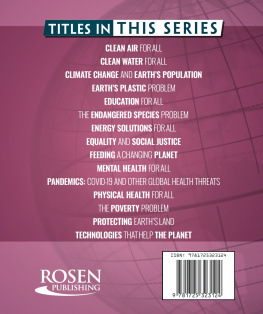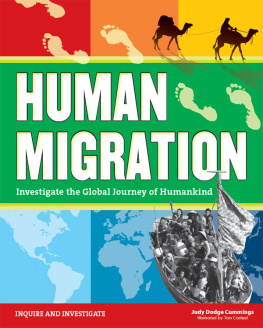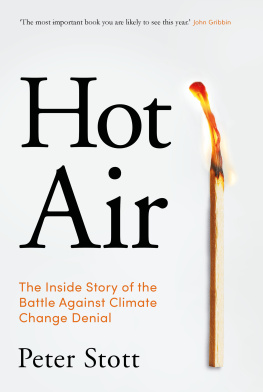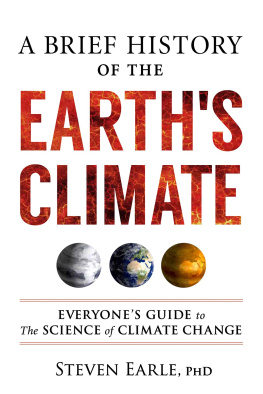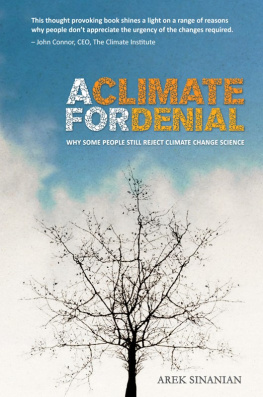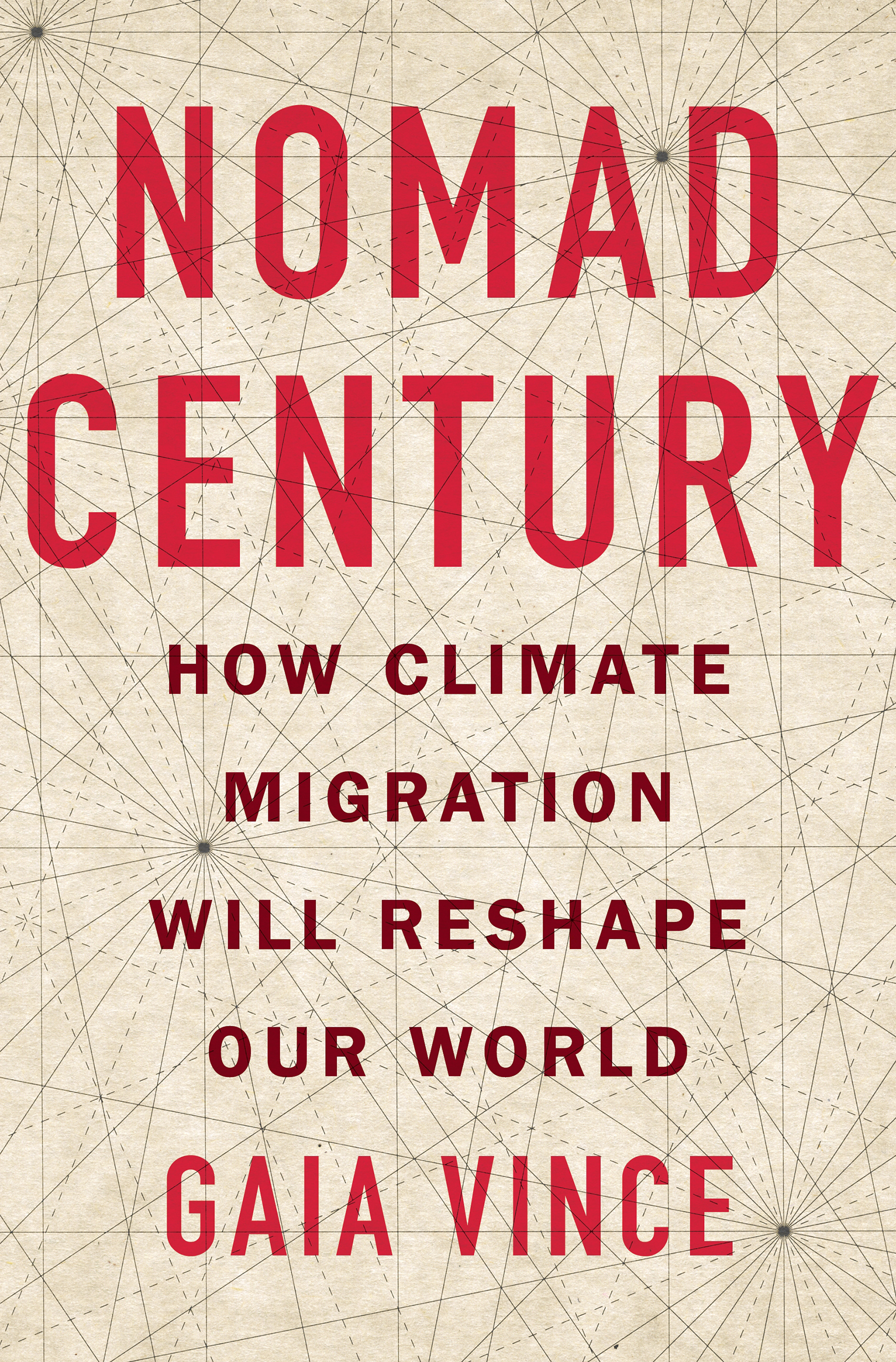Contents
Guide
Pagebreaks of the print version

The author and publisher have provided this e-book to you for your personal use only. You may not make this e-book publicly available in any way. Copyright infringement is against the law. If you believe the copy of this e-book you are reading infringes on the authors copyright, please notify the publisher at: us.macmillanusa.com/piracy.
For my father
And for all those who nurture tropical
flowers under grey northern skies
A great upheaval is coming. It will change us, and our planet.
In the global south, extreme climate change will push vast numbers of people from their homes, with large regions becoming uninhabitable; in the planets more comfortable north, economies will struggle to survive demographic changes with massive workforce shortages and an impoverished elderly population.
Over the next fifty years, hotter temperatures combined with more intense humidity are set to make large swathes of the globe lethal for 3.5 billion of us. Fleeing the tropics, the coasts and formerly arable lands, huge populations will need to seek new homes; you will be among them, or you will be receiving them. This migration has already begun we have all seen the streams of people fleeing drought-hit areas in Latin America, Africa and Asia where farming and other rural livelihoods have become impossible. Climate-driven movements are adding to a massive migration already under way to the worlds cities. The number of migrants has doubled globally over the past decade, and the issue of what to do about rapidly increasing populations of displaced people will only become greater and more urgent as the planet heats.
Have no doubt, we are facing a species emergency but we can manage it. We can survive, but to do so will require a planned and deliberate migration of a kind humanity has never before undertaken.
People are finally beginning to face up to the climate emergency. However, while nations rally to reduce their carbon emissions, and try to adapt at-risk places to hotter conditions, there is an elephant in the room: for large portions of the world, local conditions are becoming too extreme and there is no way to adapt. The world already sees twice as many days where temperatures exceed 50C than thirty years ago this level of heat is deadly for humans, and also hugely problematic for buildings, roads and power stations. In short, it makes an area unliveable.
This explosive planetary drama demands a dynamic human response, and the solutions are within our hands. We need to help people to move from danger and poverty to safety and comfort to build a more resilient global society for everyones benefit. Human movement on a scale never before seen will dominate this century and remake our world. It could be a catastrophe or, managed well, it could be our salvation.
People will have to move to survive.
Large populations will need to migrate, and not simply to the nearest city, but also across continents. Those living in regions with more tolerable conditions, especially nations in northern latitudes, will need to accommodate millions of migrants into increasingly crowded cities while themselves adapting to the demands of climate change. We will need to create entirely new cities near the planets cooler poles, in land that is rapidly becoming ice-free. Parts of Siberia, for example, are already experiencing temperatures of 30C for months at a time.
Wherever you live now, this migration will affect you and the lives of your children. It may seem obvious that Bangladesh, a country where one-third of the population lives along a sinking, low-lying coast, is becoming uninhabitable. (More than 13 million Bangladeshis nearly 10 per cent of the population are expected to have left the country by 2050.) Or that desert nations like Sudan are becoming unliveable. But in the coming decades wealthy nations will be severely affected too. Hot, drought-afflicted Australia will suffer, as will parts of the United States, forcing millions from cities such as Miami and New Orleans to seek safety in cooler states like Oregon and Montana. Cities will need to be built to house them.
In India alone, close to a billion people will be at risk. Another half billion will need to move within China, and millions more across Latin America and Africa. Southern Europes treasured Mediterranean climate has already shifted north, leaving regular desert-like conditions from Spain to Turkey. Meanwhile, parts of the Middle East have already been made intolerable by increasing heat, lack of water and poor soils.
People will begin leaving. They are already on the move.
We are undergoing a species-wide planetary upheaval and it occurs not only at a time of unprecedented climate change but also of human demographic change.
Global population will continue to rise in the coming decades, peaking at perhaps 10 billion in the 2060s. Most of this increase will be in the tropical regions that are worst hit by climate catastrophe, causing people there to flee northwards. The global north faces the opposite problem a top-heavy demographic crisis, in which a large elderly population is supported by a too-small workforce. At least twenty-three nations, including Spain and Japan, are expected to see their populations halve by 2100. North America and Europe have 300 million people above the traditional retirement age (65+), and by 2050 the economic old-age dependency ratio there is projected to be at forty-three elderly persons per 100 working persons aged 2064. Cities from Munich to Buffalo will begin competing with each other to attract migrants. This competition will become especially acute towards the end of the century, when some of the southern places made uninhabitable by climate change may become once again liveable through geoengineering innovations that reduce global or regional temperatures, through carbon dioxide removal and technological interventions that can cool large areas cheaply. Truly, this is the century of unprecedented, planetary human movement.
We need to plan pragmatically now, adopting a species-wide approach to ensure our human systems and communities have the resilience to weather the shocks to come. We already know which communities will need to relocate by 2050, when I will be in my seventies. We know also which places will be safest at the end of the century, when my children will be in their old age.
We need to look now at where these billions of people could be sustainably housed. Doing so will require international diplomacy, negotiations over borders, and adaptation of existing cities. The Arctic, for instance, will become a relatively habitable destination for millions of people, although the current infrastructure there, minimal though it is, is already sinking into the melting permafrost and will have to be rebuilt for the hotter conditions. Preparing for this climate migration means the phased abandonment of major cities, the relocation of others, and the building of entirely new cities in foreign lands. London, the city I live in, is at least 2,000 years old and accommodates 9 million people. We have mere decades to adapt, expand and build such cities. We can build emergency hospitals in a few days, as we saw during the Covid-19 pandemic; Ive no doubt we can build ambitious cities within years. But what sort of cities, and where, and for whom?


